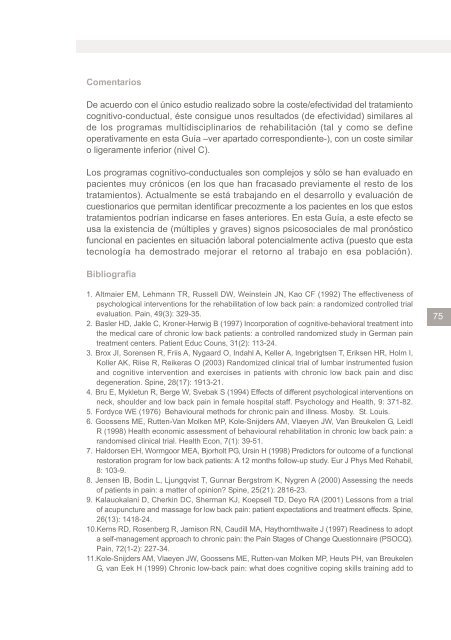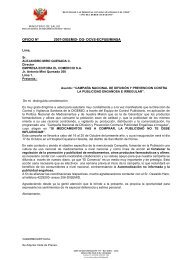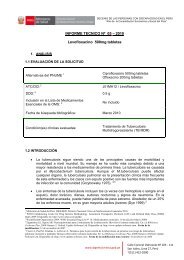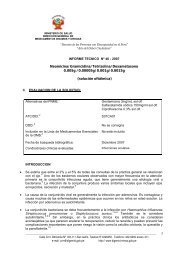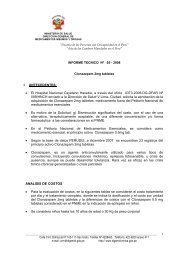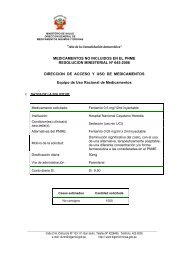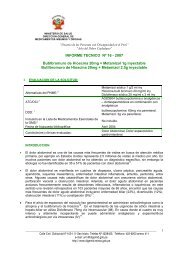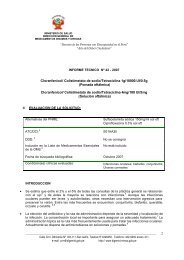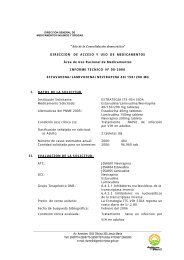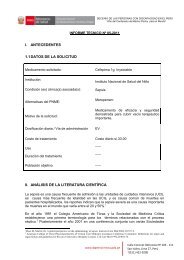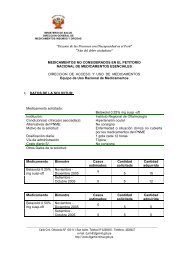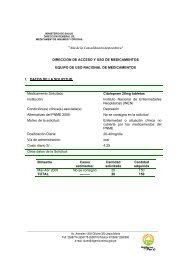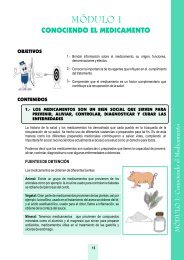Guia Lumbalgia (cambios 8 feb).FH10 - Digemid
Guia Lumbalgia (cambios 8 feb).FH10 - Digemid
Guia Lumbalgia (cambios 8 feb).FH10 - Digemid
You also want an ePaper? Increase the reach of your titles
YUMPU automatically turns print PDFs into web optimized ePapers that Google loves.
ComentariosDe acuerdo con el único estudio realizado sobre la coste/efectividad del tratamientocognitivo-conductual, éste consigue unos resultados (de efectividad) similares alde los programas multidisciplinarios de rehabilitación (tal y como se defineoperativamente en esta Guía –ver apartado correspondiente-), con un coste similaro ligeramente inferior (nivel C).Los programas cognitivo-conductuales son complejos y sólo se han evaluado enpacientes muy crónicos (en los que han fracasado previamente el resto de lostratamientos). Actualmente se está trabajando en el desarrollo y evaluación decuestionarios que permitan identificar precozmente a los pacientes en los que estostratamientos podrían indicarse en fases anteriores. En esta Guía, a este efecto seusa la existencia de (múltiples y graves) signos psicosociales de mal pronósticofuncional en pacientes en situación laboral potencialmente activa (puesto que estatecnología ha demostrado mejorar el retorno al trabajo en esa población).Bibliografía1. Altmaier EM, Lehmann TR, Russell DW, Weinstein JN, Kao CF (1992) The effectiveness ofpsychological interventions for the rehabilitation of low back pain: a randomized controlled trialevaluation. Pain, 49(3): 329-35.2. Basler HD, Jakle C, Kroner-Herwig B (1997) Incorporation of cognitive-behavioral treatment intothe medical care of chronic low back patients: a controlled randomized study in German paintreatment centers. Patient Educ Couns, 31(2): 113-24.3. Brox JI, Sorensen R, Friis A, Nygaard O, Indahl A, Keller A, Ingebrigtsen T, Eriksen HR, Holm I,Koller AK, Riise R, Reikeras O (2003) Randomized clinical trial of lumbar instrumented fusionand cognitive intervention and exercises in patients with chronic low back pain and discdegeneration. Spine, 28(17): 1913-21.4. Bru E, Mykletun R, Berge W, Svebak S (1994) Effects of different psychological interventions onneck, shoulder and low back pain in female hospital staff. Psychology and Health, 9: 371-82.5. Fordyce WE (1976) Behavioural methods for chronic pain and illness. Mosby. St. Louis.6. Goossens ME, Rutten-Van Molken MP, Kole-Snijders AM, Vlaeyen JW, Van Breukelen G, LeidlR (1998) Health economic assessment of behavioural rehabilitation in chronic low back pain: arandomised clinical trial. Health Econ, 7(1): 39-51.7. Haldorsen EH, Wormgoor MEA, Bjorholt PG, Ursin H (1998) Predictors for outcome of a functionalrestoration program for low back patients: A 12 months follow-up study. Eur J Phys Med Rehabil,8: 103-9.8. Jensen IB, Bodin L, Ljungqvist T, Gunnar Bergstrom K, Nygren A (2000) Assessing the needsof patients in pain: a matter of opinion? Spine, 25(21): 2816-23.9. Kalauokalani D, Cherkin DC, Sherman KJ, Koepsell TD, Deyo RA (2001) Lessons from a trialof acupuncture and massage for low back pain: patient expectations and treatment effects. Spine,26(13): 1418-24.10.Kerns RD, Rosenberg R, Jamison RN, Caudill MA, Haythornthwaite J (1997) Readiness to adopta self-management approach to chronic pain: the Pain Stages of Change Questionnaire (PSOCQ).Pain, 72(1-2): 227-34.11.Kole-Snijders AM, Vlaeyen JW, Goossens ME, Rutten-van Molken MP, Heuts PH, van BreukelenG, van Eek H (1999) Chronic low-back pain: what does cognitive coping skills training add to75 75


